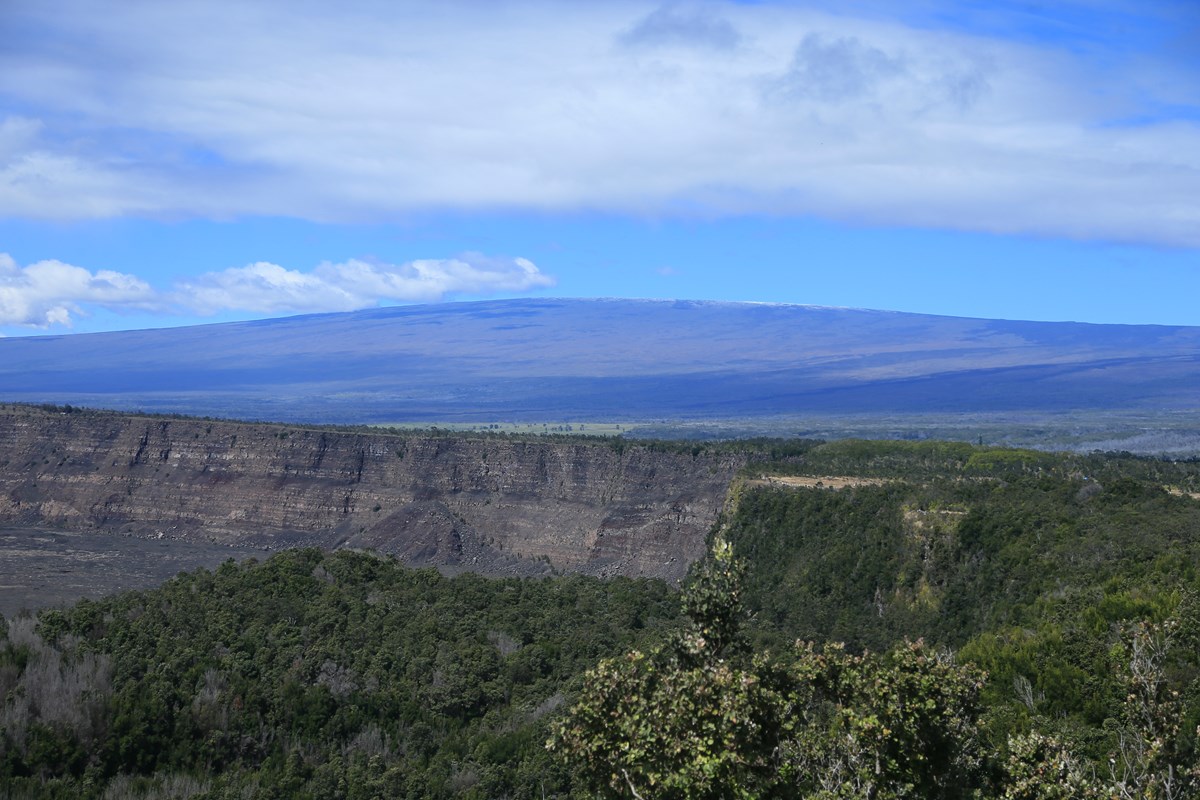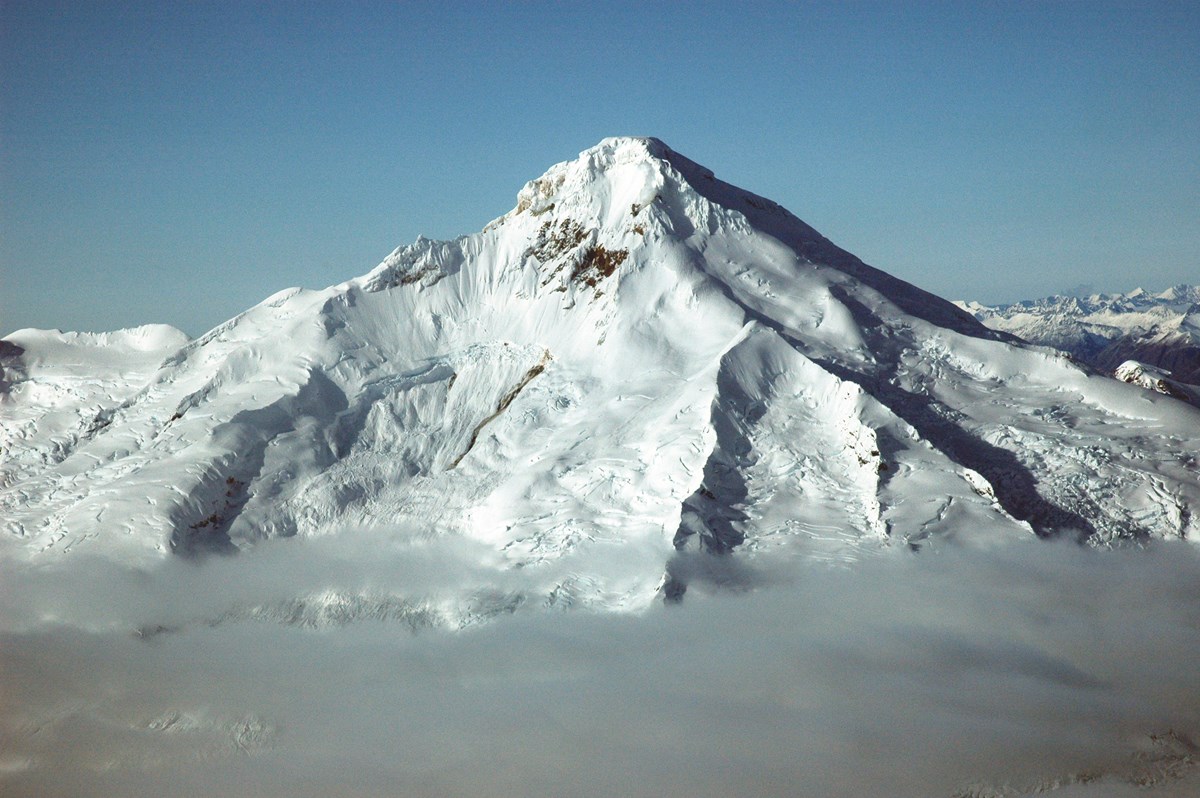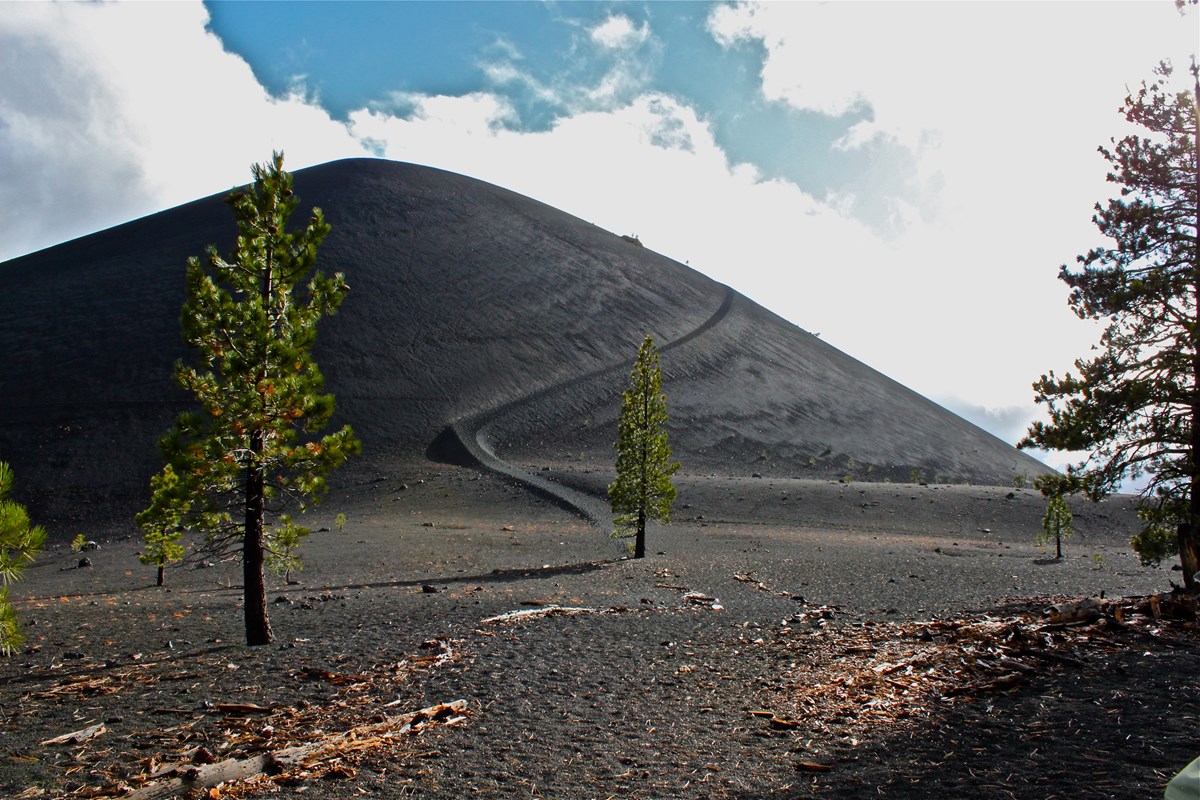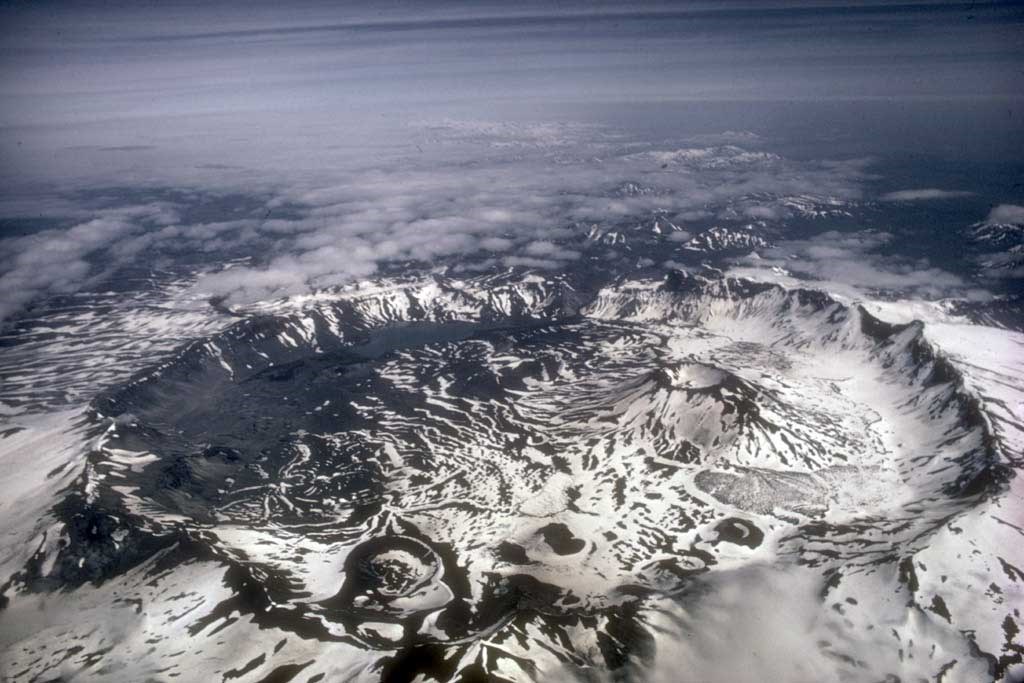2.1 Volcano Shape
After completing the weekly reading on volcanoes, you should already have a general idea of the main types of volcanoes:
Shield
Shield Volcanoes are by far the largest types of volcanoes in size due to their extremely broad slopes that can extend for many tens of kilometers. These volcanoes have shallow slopes that are typically formed by runny lavas that are often basaltic (as is the case of Mauna Loa, the largest volcano, in Hawai’i).

Stratovolcano (AKA, composite)
Stratovolcanoes are large, steep mountains formed by many alternating layers of ash and volcanic rock with a small crater at the top. These are the stereotypical volcanoes imagined in most media and they are known for their violent eruptions with ash, pyroclastic flows, and lava bombs from a source of magma that is usually intermediate in composition.

Cinder Cone
Cinder Cone volcanoes are small, hill-like collections of basaltic ash and scoria, a volcanic rock that erupted with a lot of escaping gas. These are the smallest types of volcanoes, but like stratovolcanoes, they tend to have steep slopes.

and
Caldera
Calderas were once steep volcanoes with a central crater at the top, but they were so explosive due to the rhyolitic magma in their chambers, that a violent eruption caused the volcano dome to collapse inward forming a huge crater. These craters are often infilled with water or become volcanic crater lakes, but don’t be fooled – they are often still active volcanoes!

Return to the reading to review these if you forget the difference between them. Otherwise, you will test your knowledge of them in these next exercises!
PRACTICE ONLY:

